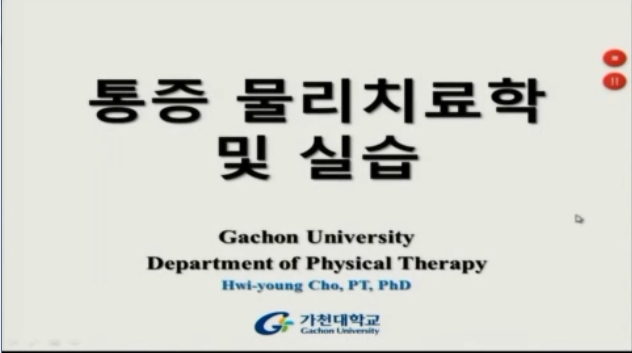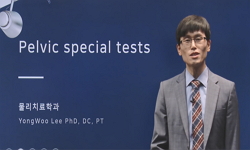Purpose: Ureteral calculi are commonly encountered in the emergency department. Ureteral calculi influence the quality of life of patients, causing pain and economic burden. The optimal management of ureteral calculi remains a challenge for practicing...
http://chineseinput.net/에서 pinyin(병음)방식으로 중국어를 변환할 수 있습니다.
변환된 중국어를 복사하여 사용하시면 됩니다.
- 中文 을 입력하시려면 zhongwen을 입력하시고 space를누르시면됩니다.
- 北京 을 입력하시려면 beijing을 입력하시고 space를 누르시면 됩니다.

요관결석 환자에서 자연배출의 기대치료 실패 예측인자 = Predictors for the Failure of Expectant Management for the Spontaneous Passage of Ureteral Calculi
한글로보기https://www.riss.kr/link?id=A104607357
- 저자
- 발행기관
- 학술지명
- 권호사항
-
발행연도
2013
-
작성언어
Korean
- 주제어
-
등재정보
KCI등재
-
자료형태
학술저널
- 발행기관 URL
-
수록면
403-409(7쪽)
-
KCI 피인용횟수
0
- 제공처
-
0
상세조회 -
0
다운로드
부가정보
다국어 초록 (Multilingual Abstract)
The optimal management of ureteral calculi remains a challenge for practicing physicians; therefore, this study was designed to determine which factors are related to the failure of their spontaneous passage.
Methods: This study was a retrospective review of the medical records of one hundred ninety-five patients who visited the emergency department complaining of renal colic from February 2012 to December 2012. Bivariate analyses were conducted relating physical, laboratory, and radiological methods to predict the failure of spontaneous passage. A multivariate logistic regression model was then derived, with all variables in the final model significant at p<0.05.
Results: One hundred twenty-eight stones were spontaneously expelled and sixty-seven were not. The mean stone size was significantly larger in the non-passage group than the passage group (p<0.001). When the stones were located in the upper ureter, or on the right side, the spontaneous passage rate was lower (p<0.001, p=0.035).
Increased neutrophils and positive tests for urinary protein and bilirubin were also associated with the decreased likelihood of spontaneous passage (p=0.046, p=0.029, and p=0.048, respectively). In addition, the longer duration of symptoms and a previous history of ureteral calculi were related to a lower chance of spontaneous passage (p=0.005, p=0.019).
Conclusion: Prognostic factors of failure, after the initial expectant management of ureteral calculi, included: calculi size, location (e.g., side), the duration of symptoms, the previous history, neutrophil levels, urinary bilirubin levels, and urinary protein levels. Therefore, emergency physicians need to cautiously decide between watchful waiting and interventions in these patients.
Purpose: Ureteral calculi are commonly encountered in the emergency department. Ureteral calculi influence the quality of life of patients, causing pain and economic burden.
The optimal management of ureteral calculi remains a challenge for practicing physicians; therefore, this study was designed to determine which factors are related to the failure of their spontaneous passage.
Methods: This study was a retrospective review of the medical records of one hundred ninety-five patients who visited the emergency department complaining of renal colic from February 2012 to December 2012. Bivariate analyses were conducted relating physical, laboratory, and radiological methods to predict the failure of spontaneous passage. A multivariate logistic regression model was then derived, with all variables in the final model significant at p<0.05.
Results: One hundred twenty-eight stones were spontaneously expelled and sixty-seven were not. The mean stone size was significantly larger in the non-passage group than the passage group (p<0.001). When the stones were located in the upper ureter, or on the right side, the spontaneous passage rate was lower (p<0.001, p=0.035).
Increased neutrophils and positive tests for urinary protein and bilirubin were also associated with the decreased likelihood of spontaneous passage (p=0.046, p=0.029, and p=0.048, respectively). In addition, the longer duration of symptoms and a previous history of ureteral calculi were related to a lower chance of spontaneous passage (p=0.005, p=0.019).
Conclusion: Prognostic factors of failure, after the initial expectant management of ureteral calculi, included: calculi size, location (e.g., side), the duration of symptoms, the previous history, neutrophil levels, urinary bilirubin levels, and urinary protein levels. Therefore, emergency physicians need to cautiously decide between watchful waiting and interventions in these patients.
참고문헌 (Reference)
1 장웅기, "하부요관결석의 자연배출을 위한 이뇨제, 알파차단제, 부신피질 호르몬제 삼중요법의 효과" 대한비뇨기과학회 49 (49): 1013-1017, 2008
2 한민철, "하부요관결석의 기대요법 시 Tamsulosin의 결석배출 효과" 대한비뇨기과학회 47 (47): 708-711, 2006
3 송동우, "비조영증강 전산화단층촬영 소견에 따른 요관결석의 자연배출 예측인자" 대한비뇨기과학회 49 (49): 1094-1099, 2008
4 Mahmood A, "Urolithiasis : the influence of stone size on management" 4 : 570-573, 2007
5 Miller OF, "Time to stone passage for observed ureteral calculi: a guide for patient education" 162 : 688-690, 1999
6 Brockis JG, "The effects of vegetable and animal protein diets on calcium, urate and oxalate excretion" 54 : 590-593, 1982
7 Robertson WG, "The effect of high animal protein intake on the risk of calcium stone-formation in the urinary tract" 57 : 285-288, 1979
8 Sfoungaristos S, "Role of white blood cell and neutrophil counts in predicting spontaneous stone passage in patients with renal colic" 110 : 339-345, 2012
9 Coll DM, "Relationship of spontaneous passage of ureteral calculi to stone size and location as revealed by unenhanced helical CT" 178 : 101-103, 2002
10 Sfoungaristos S, "Predictors for spontaneous stone passage in patients with renal colic secondary to ureteral calculi" 44 : 71-79, 2012
1 장웅기, "하부요관결석의 자연배출을 위한 이뇨제, 알파차단제, 부신피질 호르몬제 삼중요법의 효과" 대한비뇨기과학회 49 (49): 1013-1017, 2008
2 한민철, "하부요관결석의 기대요법 시 Tamsulosin의 결석배출 효과" 대한비뇨기과학회 47 (47): 708-711, 2006
3 송동우, "비조영증강 전산화단층촬영 소견에 따른 요관결석의 자연배출 예측인자" 대한비뇨기과학회 49 (49): 1094-1099, 2008
4 Mahmood A, "Urolithiasis : the influence of stone size on management" 4 : 570-573, 2007
5 Miller OF, "Time to stone passage for observed ureteral calculi: a guide for patient education" 162 : 688-690, 1999
6 Brockis JG, "The effects of vegetable and animal protein diets on calcium, urate and oxalate excretion" 54 : 590-593, 1982
7 Robertson WG, "The effect of high animal protein intake on the risk of calcium stone-formation in the urinary tract" 57 : 285-288, 1979
8 Sfoungaristos S, "Role of white blood cell and neutrophil counts in predicting spontaneous stone passage in patients with renal colic" 110 : 339-345, 2012
9 Coll DM, "Relationship of spontaneous passage of ureteral calculi to stone size and location as revealed by unenhanced helical CT" 178 : 101-103, 2002
10 Sfoungaristos S, "Predictors for spontaneous stone passage in patients with renal colic secondary to ureteral calculi" 44 : 71-79, 2012
11 Picozzi SC, "Management of ureteral calculi and medical expulsive therapy in emergency departments" 4 : 70-76, 2011
12 Arumuham V, "Is follow-up required for uncomplicated distal ureteric stones <6 mm?" 7 : 513-, 2011
13 Schwille PO, "Idiopathic recurrent calcium urolithiasis(IRCU) : variation of fasting urinary protein is a window to pathophysiology or simple consequence of renal stones in situ? A tripartite study in male patients providing insight into oxidative metabolism as possible driving force towards alteration of urine composition, calcium salt crystallization and stone formation" 14 : 378-392, 2009
14 McPherson, RA, "Henry’s clinical diagnosis and management by laboratory methods" Elsevier 459-, 2011
15 Dong-Un Tchey, "Expectant Management of Ureter Stones: Outcome and Clinical Factors of Spontaneous Passage in a Single Institution’s Experience" 대한비뇨기과학회 52 (52): 847-851, 2011
16 The Korean Society of Emergency Medicine, "Emergency medicine" Koonja 748-, 2011
17 Bensalah K, "Cost-effectiveness of medical expulsive therapy using alpha-blockers for the treatment ofdistal ureteral stones" 53 : 411-418, 2008
18 Prina LD, "Comparison of stone size and response to analgesic treatment in predicting outcome of patients with renal colic" 9 : 135-139, 2002
19 Johri N, "An update and practical guide to renal stone management" 116 : 159-171, 2010
20 Nuss GR, "Adjunctive therapy to promote stone passage" 7 : 67-74, 2005
21 Preminger GM, "2007 guideline for the management of ureteral calculi" 78 : 2418-2434, 2007
동일학술지(권/호) 다른 논문
-
Early Initiation of Therapeutic Hypothermia after Sudden Out-of-Hospital Cardiac Arrest
- 대한응급의학회
- ( Dong Hoon Lee )
- 2013
- KCI등재
-
- 대한응급의학회
- ( Seong Youn Hwang )
- 2013
- KCI등재
-
- 대한응급의학회
- ( Ki Seong Lee )
- 2013
- KCI등재
-
- 대한응급의학회
- 장병학
- 2013
- KCI등재
분석정보
인용정보 인용지수 설명보기
학술지 이력
| 연월일 | 이력구분 | 이력상세 | 등재구분 |
|---|---|---|---|
| 2027 | 평가예정 | 재인증평가 신청대상 (재인증) | |
| 2021-01-01 | 평가 | 등재학술지 유지 (재인증) |  |
| 2020-05-08 | 학회명변경 | 영문명 : The Korean Society Of Emergency Medicine -> The Korean Society of Emergency Medicine |  |
| 2018-01-01 | 평가 | 등재학술지 유지 (등재유지) |  |
| 2015-01-01 | 평가 | 등재학술지 유지 (등재유지) |  |
| 2011-01-01 | 평가 | 등재학술지 유지 (등재유지) |  |
| 2009-01-01 | 평가 | 등재학술지 유지 (등재유지) |  |
| 2006-01-01 | 평가 | 등재학술지 선정 (등재후보2차) |  |
| 2005-01-01 | 평가 | 등재후보 1차 PASS (등재후보1차) |  |
| 2003-01-01 | 평가 | 등재후보학술지 선정 (신규평가) |  |
학술지 인용정보
| 기준연도 | WOS-KCI 통합IF(2년) | KCIF(2년) | KCIF(3년) |
|---|---|---|---|
| 2016 | 0.23 | 0.23 | 0.22 |
| KCIF(4년) | KCIF(5년) | 중심성지수(3년) | 즉시성지수 |
| 0.22 | 0.22 | 0.339 | 0.06 |




 KISS
KISS






